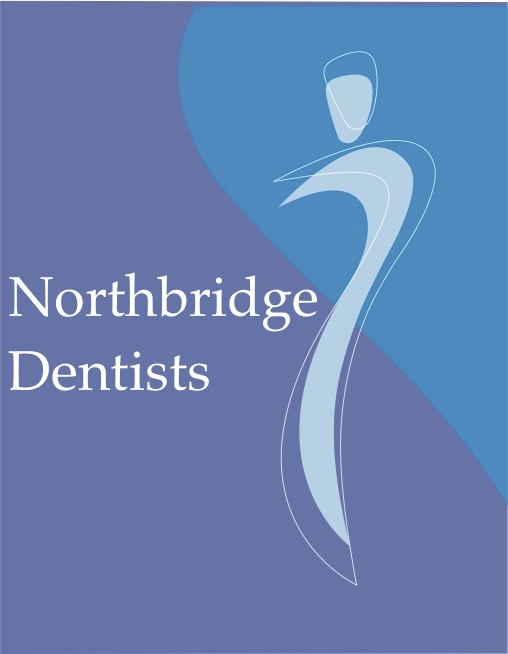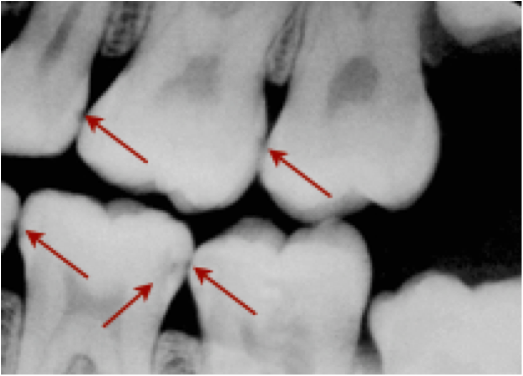“X-rays” actually refer to the radiation emitted from the x-ray machine. The image produced is known as a “radiograph.” Radiographs are vital to diagnosis and treatment in dentistry. Many treatments cannot be performed (both practically and legally) without dental radiographs.
A dentist usually recommends "screening radiographs" every 2 years or so. This may be more frequent for those at a higher risk of decay. So why are they taken? This is to check between the teeth and underneath the little grooves (or "fissures") in your teeth, to screen for decay. It also allows the dentist to check bone levels and in some instances other pathology or the presence of un-erupted teeth. Below shows a bitewing radiograph with red arrows highlighting early decay that is not visible to the naked eye when the dentist does their exam.
The red arrows show decay as little "shadows" between the teeth. These are not visible to the naked eye when looking at the teeth from above. This person needs to improve their flossing!
As you can appreciate, detecting decay when it smaller makes for more conservative treatment, rather than waiting until a nasty toothache!
In other instances a dentist may recommend a radiograph known as a pA or periapical. These show the root and the bone surrounding the tooth. They are excellent for identifying infection at the base of teeth and can be used to assess more extensive bone loss. They are often used prior to tooth extractions or during root canal treatment.
Panoramic films or OPGs give a view of the entire upper and lower jaw. It is particularly important prior to orthodontic treatment, dentures, full mouth treatment, to assess the position of wisdom teeth and to assess trauma and pathology in the jaw.
So is the radiation harmful?
Radiation exposure is greatly reduced today with modern equipment, high-speed films and filters built-in to machines. In fact, the radiation received from one dental radiograph is equivalent to about 1/3rd the daily background radiation we receive from things like building materials, outside radiation and even food. While considered safe with the use of a lead apron even during pregnancy, where possible a dentist may choose to defer radiographs until the baby is born, just to give peace of mind.
If you have any further questions, our friendly Northbridge Dentists team is always happy to answer them!



